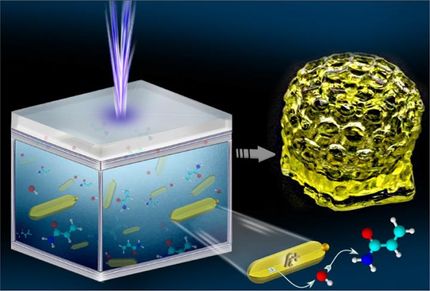Weill Cornell, Ithaca researchers use cotton candy to create new bloodflow routes
Advertisement
A lollipop at the end of a doctor's visit may ease the sobs of a crying child, but now, researchers hope to use other sugary structures to heal patients. A team of physicians and scientists from NewYork-Presbyterian Hospital/Weill Cornell Medical Center and the Ithaca campus may have developed a way to create engineered tissue that is well accepted by the body. Results from the project were published in Soft matter.
Currently, engineered tissues are used to take the place of damaged tissue due to injury, burns or from surgical procedures. However, they are limited in size and often die from a lack of blood supply that provides life-giving nutrients.
"For decades, the lack of a suitable blood supply has been the major limitation of tissue engineering," said Dr. Jason Spector, a plastic surgeon at NewYork-Presbyterian/Weill Cornell and assistant professor at Weill Cornell Medical College. "Without a network of blood vessels, only small, thin swaths of engineered tissue have longevity in the body."
Using crystalline sugar, scientists created a network of tiny tubes to act as tunnels, capable of shuttling nutrition-rich blood between the body's natural tissue and an artificial graft. To create the sugar fibers, researchers at the Cornell Nanobiotechnology Center (NBTC) used a common cotton candy machine. A polymer was then poured over the fibers. Once hardened, the implant was soaked in warm water, dissolving the sugars and leaving behind a web of three-dimensional hollow micro-channels.
The study is in early stages and not yet approved for clinical use. However, promising early findings show that the novel method infuses implants with life-giving blood. The goal is to allow development of larger and more complex implants, fed by a person's own circulatory system.
Other news from the department science

Get the life science industry in your inbox
By submitting this form you agree that LUMITOS AG will send you the newsletter(s) selected above by email. Your data will not be passed on to third parties. Your data will be stored and processed in accordance with our data protection regulations. LUMITOS may contact you by email for the purpose of advertising or market and opinion surveys. You can revoke your consent at any time without giving reasons to LUMITOS AG, Ernst-Augustin-Str. 2, 12489 Berlin, Germany or by e-mail at revoke@lumitos.com with effect for the future. In addition, each email contains a link to unsubscribe from the corresponding newsletter.























































